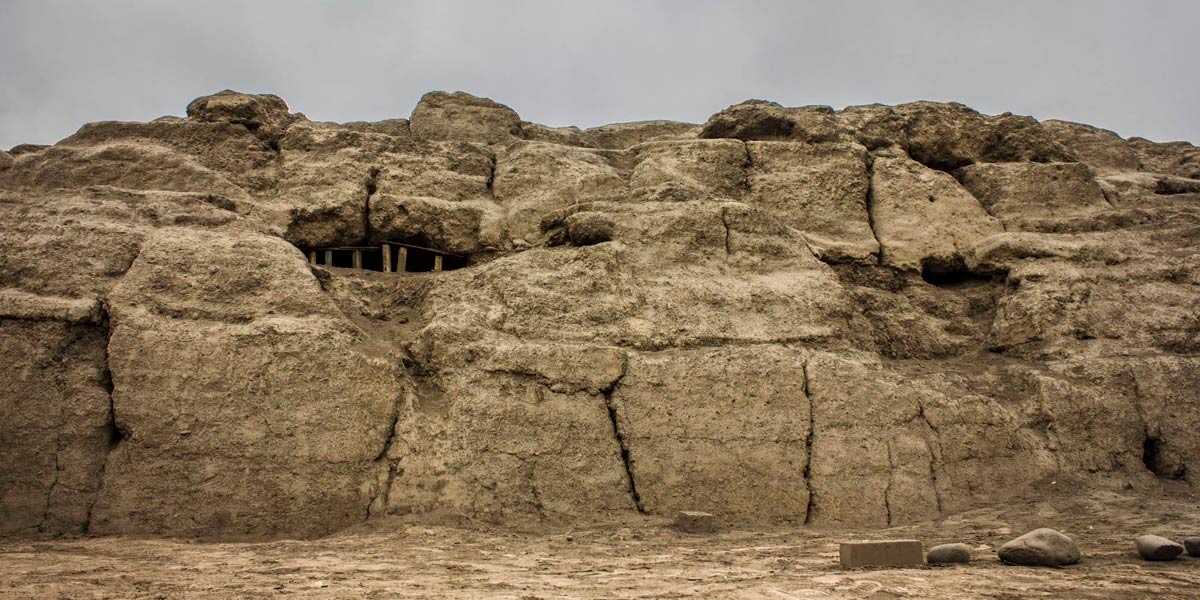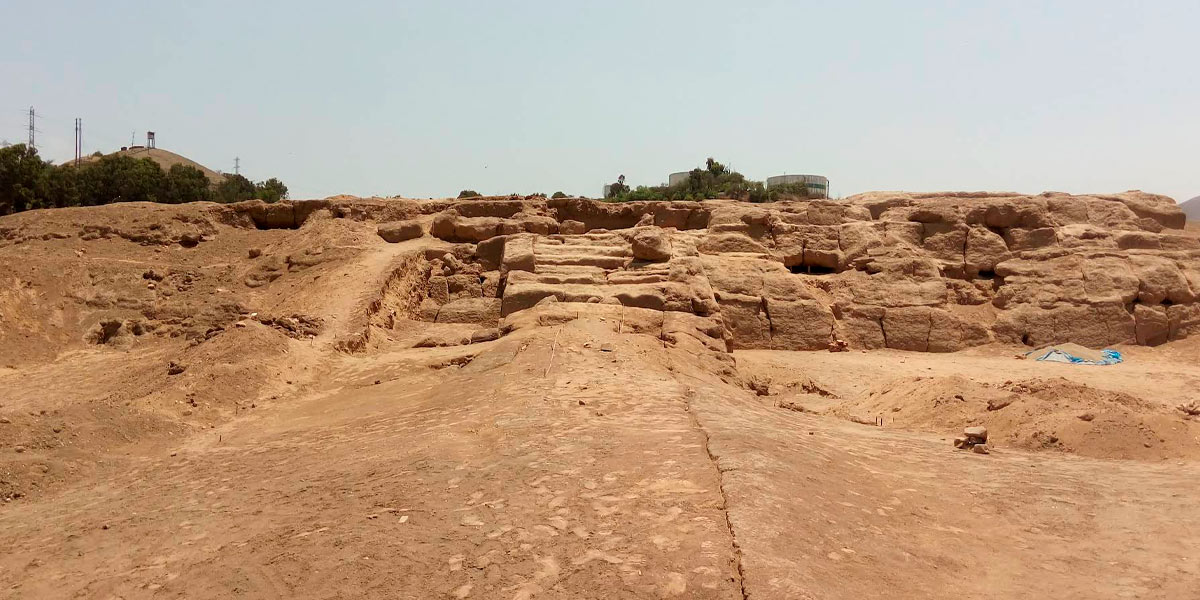The Huaca Culebras was declared Cultural Heritage of the Nation in 2001 by National Directoral Resolution N.° 082/INC. This archaeological site worked as an administrative center of the Lima Culture (3rd-4th centuries A.D., Early Intermediate Period). Its buildings, constructed with adobe, stone, and cane using the rammed earth technique, were mainly for housing and the development of an organized community of fishermen. The huaca stands on a trapezoidal base and is organized into three main sectors.
According to the researcher Juan Paredes Olvera, the settlement is characterized by a main building of large volume and size, surrounded by smaller constructions to the southeast and northwest, many of them located in nearby ravines. To the southeast, an L-shaped mound is preserved, divided into the subsectors called Quebrada 4 and Pampa de los Perros, while to the northwest other constructions are distributed in three ravines. In the center stands the main building, made up of two superimposed platforms and a central ramp facing southwest.
A notable finding occurred in the 1950s, when Louis Stumer discovered polychrome murals with intertwined designs in this place, a distinctive feature of the art of the Lima Culture, which confirms the ceremonial and symbolic importance of the complex.
Where is Cerro Culebras located?
The Huaca Cerro Culebras is located in the district of Ventanilla, on the right bank of the Chillón River, within the province of Callao, in the department of the same name. It is an archaeological legacy left by the inhabitants of the Lima Culture, probably settled in the area during the 3rd to 8th centuries of our era. And its discovery and greater compilation of information is due to the studies that the archaeologist Stumer carried out in the area in the 50s of the last century.
What to see in Cerro Culebras?
The archaeological complex of Cerro Culebras covers about 33 hectares and stands out for its architectural diversity. In the main sector there is a large pyramid where, during the first studies, a mural 28 meters long by 6 high was found, made with red, white, and black pigments. This mural reveals the mastery of polychromy by the Lima Culture and shows designs of intertwined snakes and fish, framed by thick lines, which highlights the strong connection of this people with the sea and its resources.
The main pyramid or temple has a trapezoidal base of approximately 2600 m². On its terraces, smaller buildings rise, while the top is reached by a staircase with walls that lead to an "S"-shaped passage. These features reflect a planned organization in both architectural and symbolic terms.
In the residential sectors, platforms and terraces have been identified, accompanied by murals smaller than those of the pyramid. The permanent dwellings were built with simpler materials, such as reeds dug in trenches, which reflects a clear difference between the ceremonial and domestic areas.
Another important finding is the burials discovered at the site, some of them different from the usual ones of the Lima Culture. The burial of an individual placed face down stands out, tied with ropes on a platform of sticks and accompanied by ceramics as offerings. In several burials, a human-shaped vessel was found, possibly a symbolic representation of the deceased.
How to get to Cerro Culebras?
For the interested party to reach Huaca Cerro Culebras, it is necessary to make a trip of a maximum of an hour and a half from Plaza Grau, in Callao, to Cerro Culebras. Admission to the legacy is free of charge, but there are visiting hours between nine in the morning and 6 in the afternoon, every day of the year.
Machu Picchu Travel Tours
Reserve our guided trips to Machu Picchu by contacting our travel experts and you will be closer to completing your adventure:
- Cusco Tours
- Machu Picchu Day Trip
- Sacred Valley to Machu Picchu
- Machu Picchu Peru
- Machu Picchu tours from Lima
- Inti Raymi Festival and Machu Picchu
- Combo Sacred Valley to Machu Picchu
Best Tours in Cusco
Many are the routes that take you to Machu Picchu, but none is like the Inca Trail Tours, the most famous pedestrian path in the Americas. After flying from the capital of Perú, Lima, you will arrive in Cusco to walk for four days along a path through forests and dense fog, millenary stone steps and discovering the ruins of ancient fortifications and Inca cities, and all the time enjoying majestic views.
- Salkantay Trek to Machu Picchu 5 days
- Hiking the Inca Trail to Machu Picchu 5 days
- Inca Quarry Trail 4 Days
- 2 Day Inca Trail Tour
- 2 Day Inca Trail with Camping
- 3 Day Inca Trail
- Vilcabamba Hike to Machu Picchu 6 days
- Choquequirao trek to Machu Picchu 9 days
- Ausangate trek 7 days
If you want to visit Machu Picchu, we recommend you to book your Machu Picchu Ticket in advance, so you will enjoy your Vacation in Machu Picchu without any problem.








